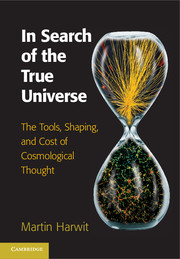Book contents
- Frontmatter
- Contents
- Preface
- Notes on Usage
- 1 The Nineteenth Century's Last Five Years
- Part I The Import of Theoretical Tools
- Part II A National Plan Shaping the Universe We Perceive
- Part III The Cost of Discerning the True Universe
- Epilogue
- Appendix: Symbols, Glossary, Units and Their Ranges
- Index
- References
1 - The Nineteenth Century's Last Five Years
Published online by Cambridge University Press: 05 December 2013
- Frontmatter
- Contents
- Preface
- Notes on Usage
- 1 The Nineteenth Century's Last Five Years
- Part I The Import of Theoretical Tools
- Part II A National Plan Shaping the Universe We Perceive
- Part III The Cost of Discerning the True Universe
- Epilogue
- Appendix: Symbols, Glossary, Units and Their Ranges
- Index
- References
Summary
In the fall of 1895, the 16-year-old Albert Einstein traveled to Zürich to seek admission to the engineering division of the Eidgenössische Polytechnikum. He had prepared for the entrance examinations on his own, in Italy, where his family had recently moved. Most students took these exams at age 18, and the Polytechnikum's Rector, instead of admitting the youngster straight away, recommended him to the Swiss canton school in Aarau, from which Einstein graduated the following year.
Graduation in Aarau led to acceptance at the Polytechnikum without further examinations. Albert began his studies there in October 1896 and graduated in late July 1900. Only, instead of pursuing engineering, he registered for studies in mathematics and physics.
Looking back at those five student years between the fall of 1895 and the summer of 1900, one can hardly imagine a more exciting era in science.
Late on the afternoon of Friday, November 8, 1895, Wilhelm Conrad Röntgen, professor of physics at Würzburg, noticed an odd shimmer. He had for some weeks been studying the emanations of different electrical discharge tubes, and had previously noted that a small piece of cardboard painted with barium platinocyanide fluoresced when brought up to one of these tubes. To understand better the cause of the fluorescence, he had now shrouded the tube with black cardboard so no light could escape. In the darkened room, he checked the opacity of the shroud.
- Type
- Chapter
- Information
- In Search of the True UniverseThe Tools, Shaping, and Cost of Cosmological Thought, pp. 1 - 6Publisher: Cambridge University PressPrint publication year: 2013



